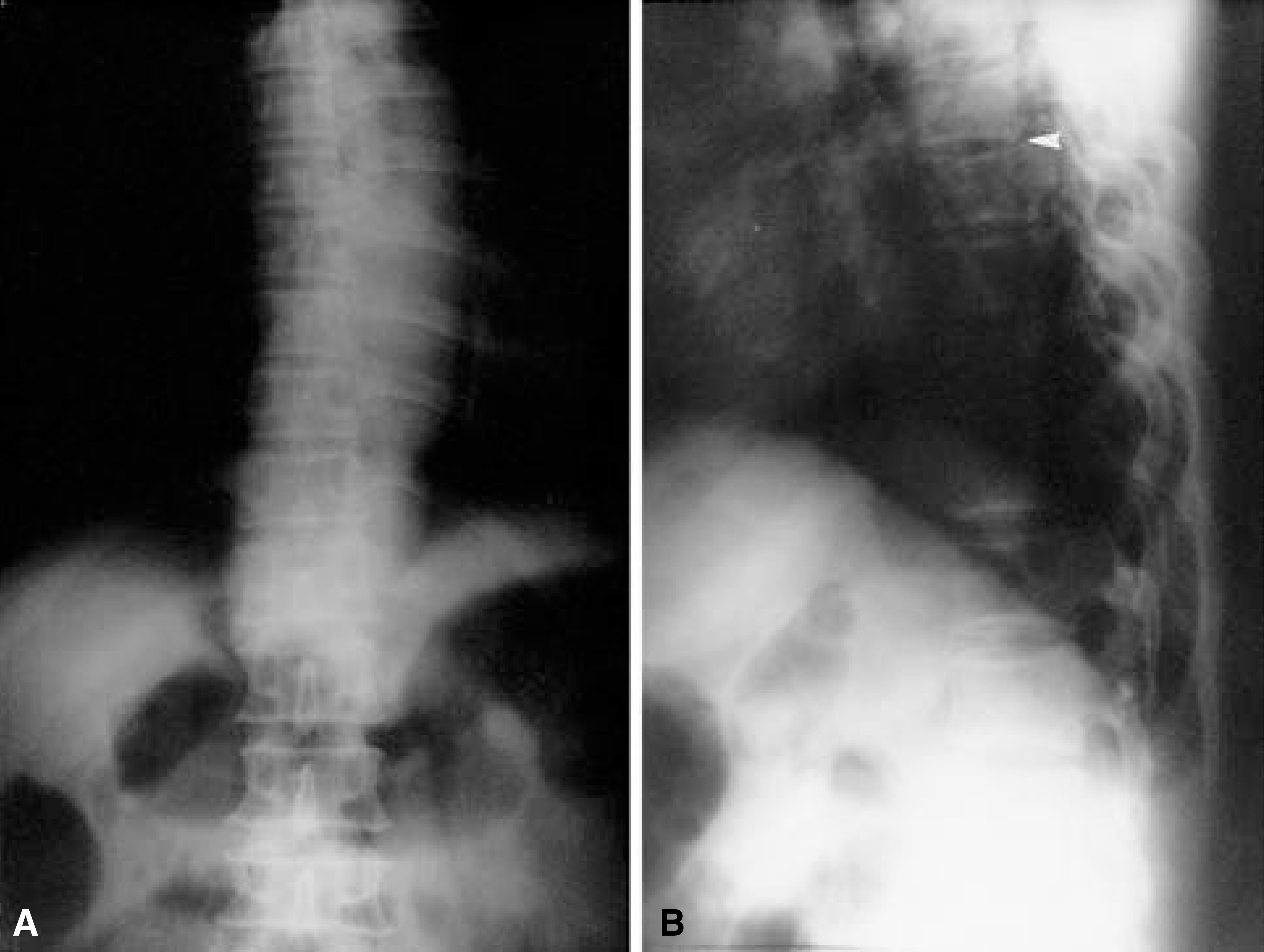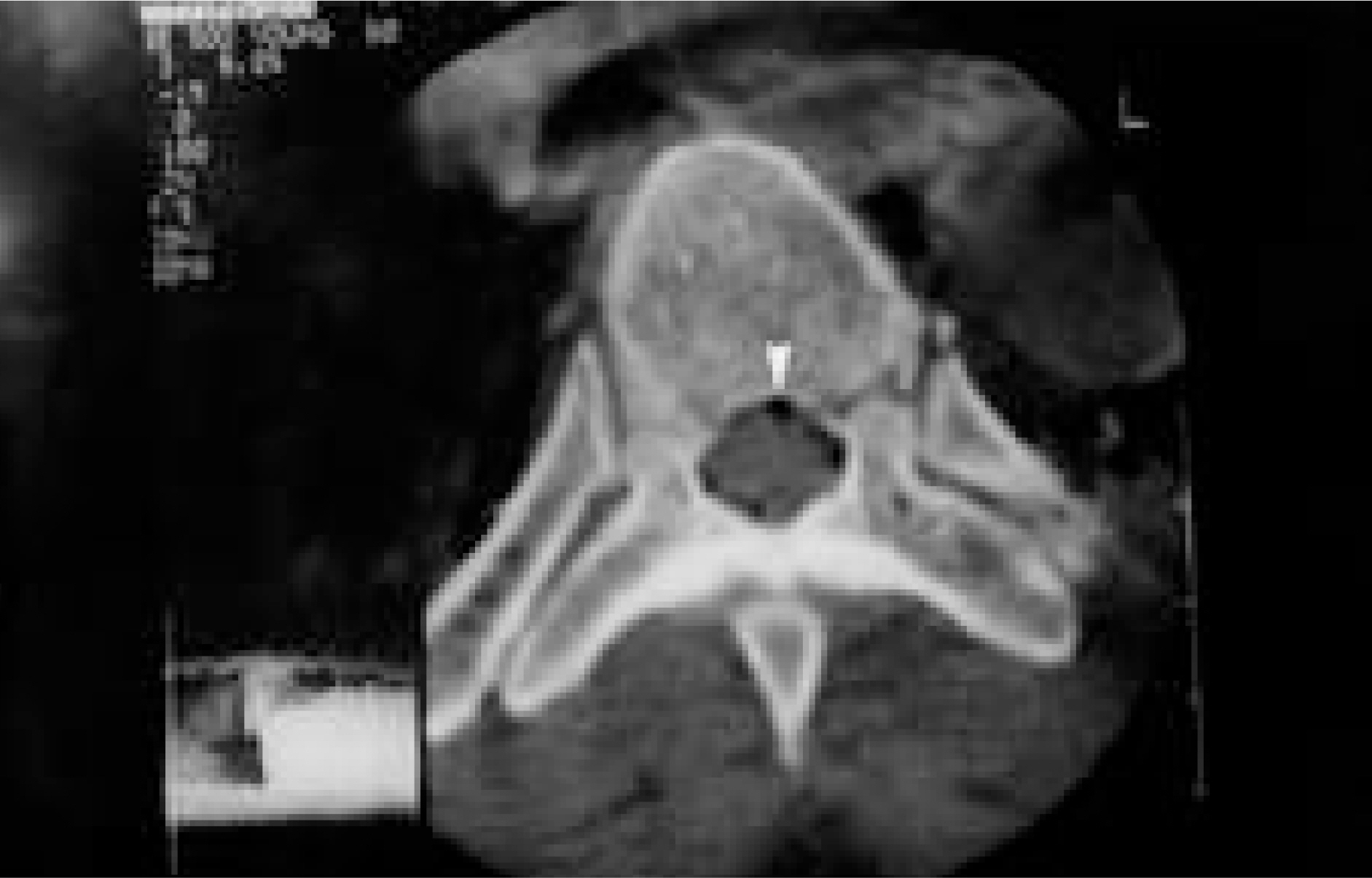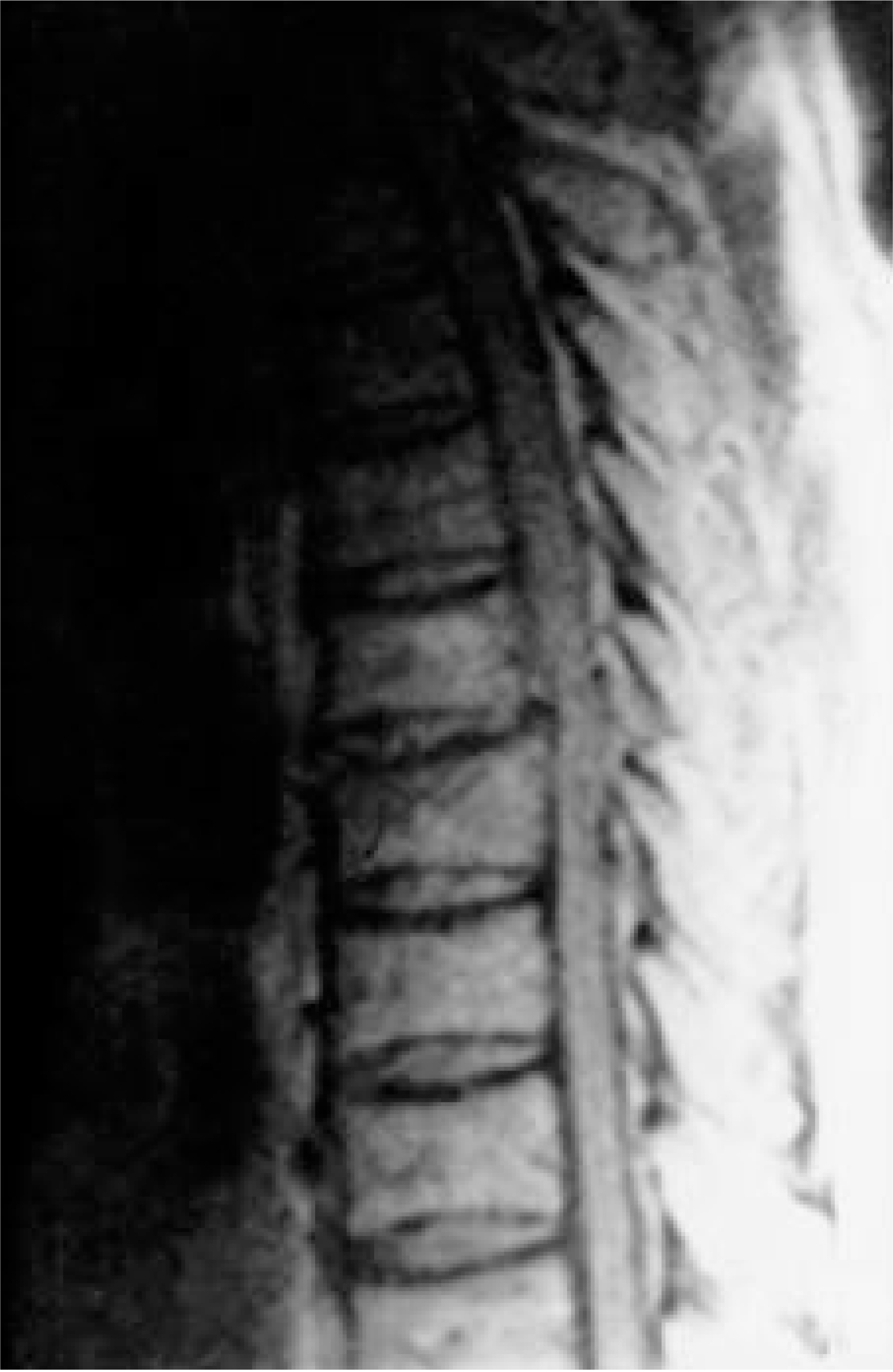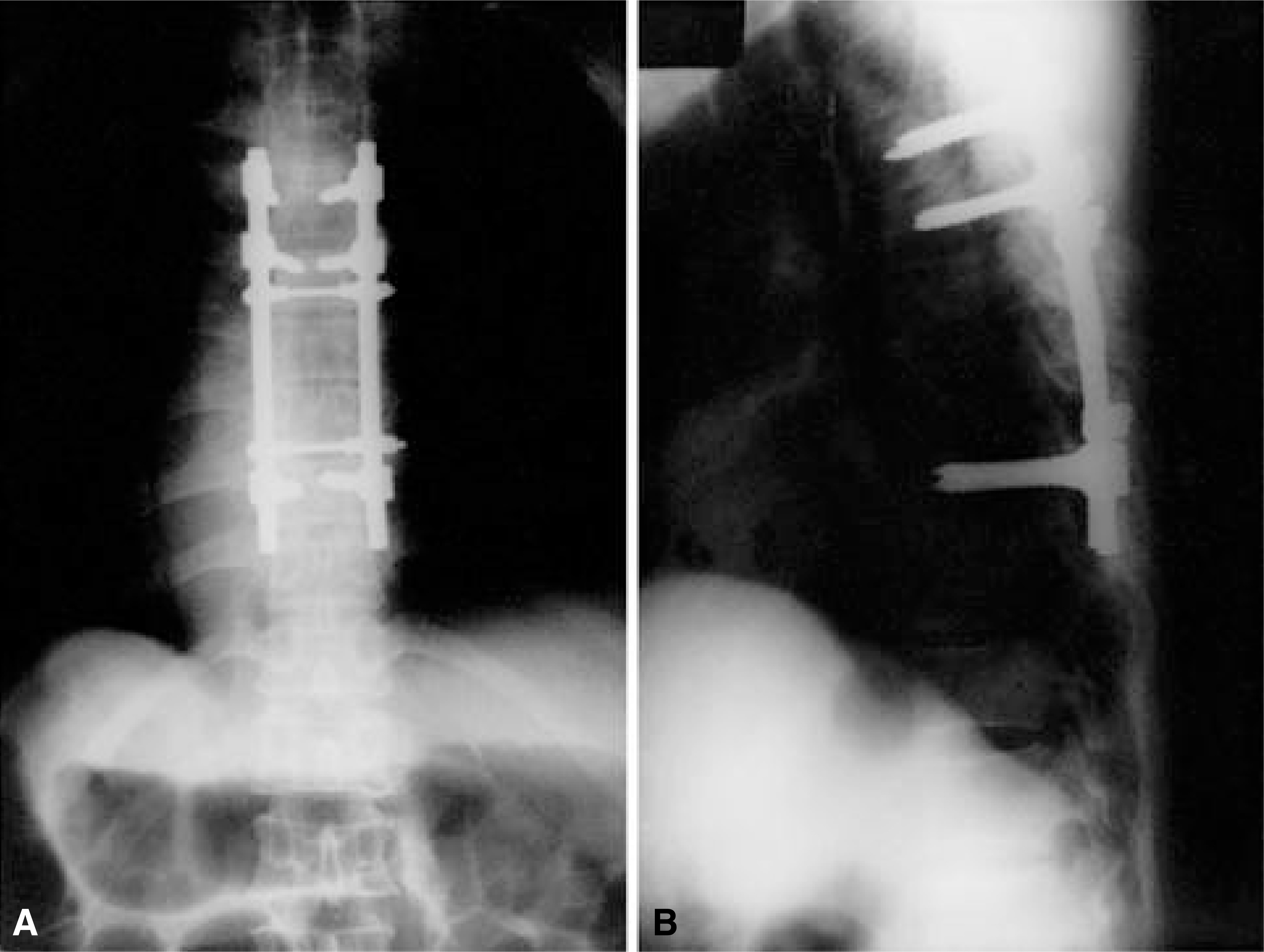J Korean Soc Spine Surg.
2001 Mar;8(1):81-85.
Intraspinal Gas with Lumberjack Injury: A Case Report
- Affiliations
-
- 1Department of Orthopedic Surgery, Soonchunhyang University College of Medicine, Bucheon, Korea. schsbj@hosp.sch.ac.kr
Abstract
-
STUDY DESIGN: A case report and review of the literature.
OBJECTIVE
To discuss the intraspinal gas associated with lumberjack injury and review the literature. MATERIAL AND METHOD: A 60-year-old man developed chest pain & paraplegia by fall down from 4m height, having hypoes-thesia on T7-8 dermatome and complete motor-sensory loss below T9.
RESULTS
Multiple rib fractures and hemopneumothorax were observed on chest radiograph and only mild offset was noted on plain spine lateral radiograph. CT scan reveals multiple air bubbles around epidural space at T7-8 and fracture of T7 pedicle. MRI shows rupture of both anterior and posterior longitudinal ligaments and extruded intervertebral disc of T7-8. Posterior decompression and stabilization with posterolateral fusion was performed on T5-9, but pain was persisted and paralysis was not improved after surgery. SUMMARY: The intraspinal gas of this case is supposed to be made by air migration from pleural cavity to intraspinal canal because of severe soft tissue injuries and fistula formation. Immediate and precise diagnosis with operative treatment was con-sidered to be important.
Keyword
MeSH Terms
Figure
Reference
-
1). Bertrand D, Aymen R, Hermann H, Alain R and Bene-dict R. Radicular compression due to lumbar intraspinal gas pseudocyst. Case report. J Neurosurg. 22-4:731–733. 1988.2). Bosser V, Dietemann JL, Warter JM, Solignac MG, Beaujeux R and Buchheit F. L5 radicular pain related to lumbar extradural gas-containing pseudocyst. Neuroradio. 31:552–553. 1990.
Article3). Charles SM, Tai QN, Frederick SV and Alfonso MB. Pneumocephalus secondary to tension pneumothorax associated with comminuted fracture of the thoracic spine. J Neurosurg. 19-1:120–122. 1986.4). David JA, Alexander RV, Todd JA and Jerome MC. Gas in the spinal canal associated with injury of the cervical spinal cord.: A diagnostic dilemma. J Bone Joint Surg. 79A-4:591–593. 1997.5). Ford LT, Gilula LA, Murphy WA and Gado M. Analysis of gas in vacuum lumar disc. Am J Roentgen. 128:1056–1057. 1977.6). Gulati AN and Weinstein ZR. Gas in the spinal canal with the lumbosacral vacuum phenomenon: CT finding, Neuroradio. 20:191–192. 1980.7). Hirotoshi Y, Kenichi S, Osamu N, Yoshirou K and Isa-kichi Y. Lumbar nerve root compression caused by lumbar intraspinal gas. Spine. 22-3:348–351. 1997.
Article8). Knutsson F. Vacuum phenomenon in intervertebral discs. Acta Radiol. 23:173–179. 1942.9). Richard BR and Leslie SL. Postoperative gas bubble foot drop. Spine. 24-3:299–301. 1999.
Article10). Stephen SG, Stiennon G, Trygve O, James EK, Joseph TL and Peter JY. Gas as a mass: A symptomatic spinal canalicular collection. J Comput Assist Tomogr. 8-1:145–146. 1984.
- Full Text Links
- Actions
-
Cited
- CITED
-
- Close
- Share
- Similar articles
-
- A Case of Intraspinal Gas-containing Cyst associated with Severe Lumbar Spondylosis
- Intraspinal Epidermoid Tumor with Previous Lumbar Puncture
- Postlaminectomy Bilateral Lumbar Intraspinal Synovial Cysts
- A Case of Intraspinal Dernoid Cyst in a Child
- Intraspinal Extradural Cyst Subsequent to a Vertebral Compression Fracture - A Case Report -





